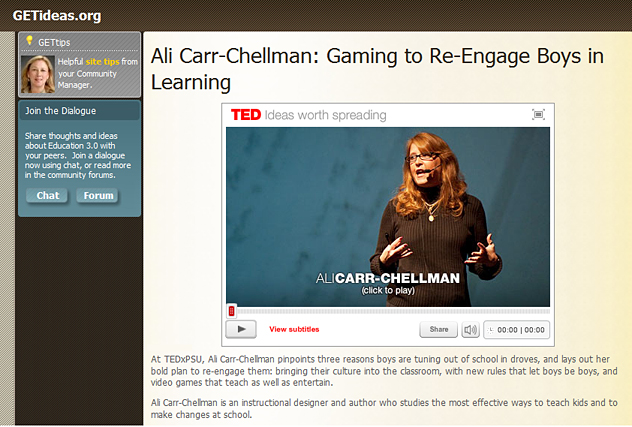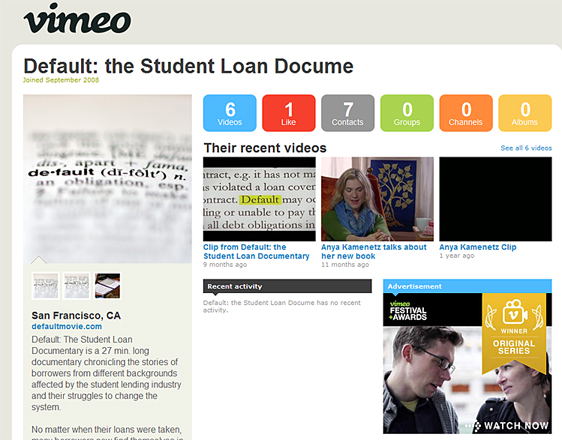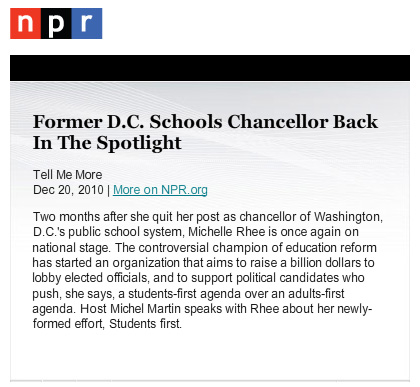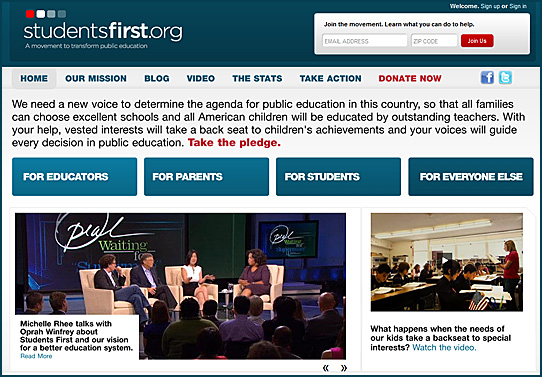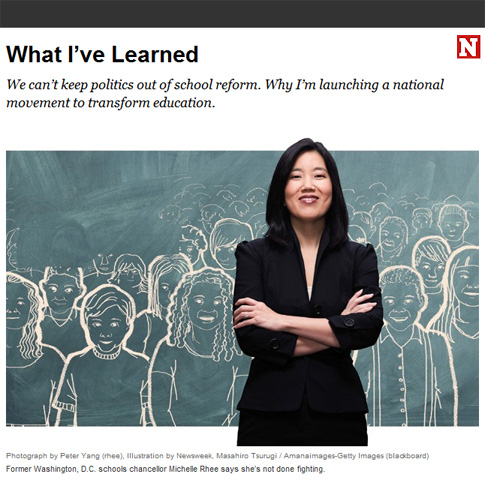- Report Calls for National Effort to Get Millions Of Young Americans onto a Realistic Path to Employability — from Harvard Graduate School of Education
- College Isn’t the Only Answer. Now What? — by Lauren Moore
On Wednesday, February 2, The Graduate School of Education at Harvard University’s Pathways to Prosperity Project published a report, which recommends that the United States broaden its approach to higher education.
Ten tips for improving your students’ Emotional Intelligence (EI) — from Edutopia.org by Diane Curtis
Implement these strategies at your school to promote social and emotional learning.
Can students learn to learn? — from InsideHigherEd.com by Scott Jaschik
SAN FRANCISCO — Why do some students in a course perform better than others of roughly equal ability?
The answers, of course, are as varied as are students. Some spend more time studying, or study more efficiently; some have other priorities; some don’t connect with the instructor. Some of these factors relate to metacognition, defined variously as knowing about knowing or being able to understand why we learn the way we do. A student with metacognition may realize after a disappointing test that she didn’t study hard enough, and needs to devote more time to academics. The student operating without metacognition may respond to the same setback by trashing his instructor on RateMyProfessors.com.
…
By forcing students to stop for a few minutes and associate their study habits with their exam performance, and to think about why they don’t know an answer, the academics hope to change students’ habits — to encourage them to figure out what they don’t know and to study in more effective ways (and more). “We want those who are not doing well to think about it,” Bonnie said.
Get off Facebook during class! — from onlineuniversities.com
From DSC:
Readers of this blog will know that I strongly support a variety of technologies in the classroom. However, I do hereby realize and confess that I’m trusting students to use such technologies wisely…and with respect for the professor as well for other students in the classroom. If you, as a student, can not do that…then I don’t blame a professor for asking you to turn it off (or something worse).
CSU students’ tuition suit now a class action — from SF Gate by Nanette Asimov, Chronicle Staff Writer
A longshot legal complaint by five students who accused California State University trustees of illegally raising tuition in 2009 is now an official class-action lawsuit on behalf of 200,000 students demanding their money back. At stake is $40 million in refunds for students at a time when CSU is facing at least a $500 million cut in state funding that could bring on layoffs, course reductions and even higher tuition. The lawsuit claims CSU illegally raised tuition for fall 2009 because students had already paid that semester’s bill.
From DSC:
- I certainly hope that this is a longshot legal complaint — both now and forevermore. However, in our litigious society, I’m not so sure.
- When someone is now paying the price of a house for an education, expectations greatly increase. When the employment situation is tough, will students come back to sue? Don’t get me wrong, I am not in support of this at all — and I think it would be misplaced anger. However, I can see it happening more and more unless the price can be brought back down. It’s like steam in a tea kettle, turn down the temp (i.e. price), and there is less steam (i.e. anger). But it’s not just that — reducing the price of education via innovative means will hopefully be a win-win situation for all involved.
Recent/related items:
- The (Un)employment Chronicles: Voices of the Degreed and Jobless — from The Huffington Post
- Share Your Story — Majoring In Debt — from The Huffington Post
- Unemployed Woman Sues College For Tuition — from The Huffington Post
The Visions of Students Today – Call for Submissions — from Professor Michael Wesch
Excerpt:
We’re working on a new video, tentatively titled “The Visions of Students Today.” We are hoping that a few students all over the world will be willing to show us how they see their world and how they learn. If you are a student, or even better: a professor or teacher trying to come up with a great way to start off the semester, we hope you will consider submitting a 2 minute video showing us scenes of what you see in your everyday life during your most critical learning moments. Importantly, these critical learning moments may not be in the classroom. They might be with friends, online, watching TV, playing videogames, or playing other games. They can be anywhere with anybody. For students, this is your chance to really show us how you learn. And of course, feel free to show us how you don’t learn as well. Critique us. Show us what doesn’t work. And most importantly, try to find clever ways to show it.
One from DSC:
Abstract:
A perfect storm has been building within higher education. Numerous, powerful forces have been converging that either already are or soon will be impacting the way higher education is offered and experienced. This paper focuses on one of those forces – the increasing price tag of obtaining a degree within higher education. It will seek to show that what goes up…must come down. Some less expensive alternatives are already here today; but the most significant changes and market “corrections” appear to be right around the corner. That is, higher education is a bubble about to burst.
One from CNBC:
— from CNBC on Monday, January 3, 2011
- CNBC’s “Price of Admission: America’s College Debt Crisis”
The Institute’s president Lauren Asher appears in CNBC‘s original documentary “Price of Admission: America’s College Debt Crisis,” weighing in on the rising cost of college and student debt in the United States.
From DSC:
Disclosure: I work for Calvin College. However, I publish the above items in the hopes that those of us at Calvin and within higher education as a whole will choose to innovate — that we will think outside the box in order to greatly lower the cost of providing a degree within higher education. It would be very helpful to future students, families, communities, nations.
No matter how you look at it, pain — but also opportunities — are ahead. Change will not be easy, nor will it be comfortable. It will most likely be very scary and very tough. At least for me, this posting and the topic it discusses evokes major soul and heart searching for me. Nevertheless, the questions remain:
- What changes do we need to make so that institutions of higher education can become more affordable? Stay relevant? Be sustainable over time?
- What should we put in place of the current “status quo”?
- Who receives the pain? Who enjoys the opportunities?
Also see:
- EUROPE: Spending cuts hit university budgets — from UniversityWorldNews.com by Alan Osborn
09 January 2011
Issue: 153
Addendum on 1-19-11:
Addendum on 1/22/10:
The Bubble: Higher Education’s Precarious Hold on Consumer Confidence — from National Association of Scholars
Job-Hunt.org — from Susan P. Joyce

Job-Hunt — http://www.job-hunt.org — is a web site that was started 14 years ago with the goal of helping job seekers and career explorers. Job-Hunt is a “Top” or “Best” site for job hunting and careers according to US News & World Report, Forbes, and PC Magazine.
I am particularly excited about a new section of our site — starting at http://www.job-hunt.org/careers/index.html — that provides descriptions of the typical duties performed in many popular jobs, plus salary and employment statistics by career as well as by major U.S. city. Visitors to this section can also view a short introductory video on most of the careers we list.
From this section, job seekers can gain access to hundreds of articles written by experts on job hunting, networking, resumes, company research, social media, protecting privacy, avoiding scams, and more. Job-Hunt also contains an extensive list of resources organized by state and by industry and profession. In all, the site provides access to 16,500 employers and job search resources including job boards, industry and professional associations, corporate “alumni” groups, and even employers who recruit using Twitter.
Online learning in 2011 — from examiner.com by Julie Marciel-Rozzi
From DSC:
Excerpts that caught my eye:
2010 saw the North Carolina Virtual Public School (NCVPS) become the second largest in the country, second only to Florida’s Virtual Public School program. Many North Carolina school districts are finding it more economical and efficient to pay the NCVPS rate of $600/per student per class rather than hiring teachers for courses that fall outside the standard curriculum but remain crucial to providing NC students with a quality, well-rounded education.
NCVPS will continue to grow in 2011 as NC school districts deal with a new round of budget cuts, and a increasingly diverse and demanding student population that expects all schools to offer high quality courses in a variety of subjects.
Educational applications for smartphones like the BlackBerry and Apple’s iPhone (and associated products) will continue to grow in number and variety. Look for more foreign language apps, more apps aimed at all ages (especially younger users), and more apps aimed at learning specific skills “in time”. Learning available when you need it.
Revisiting predictions about content subscription and education — from the xplanation
Excerpt: (emphasis by DSC):
This, in turn, is placing pressure on publishers to respond, and the best response is through e-textbooks. While these two segments represented only 5%-6% of the total market, they cut into the sale of print textbooks and will continue to grow aggressively in 2011. In other words, Content Subscription, through rental or digital is now firmly entrenched in the Higher Education market and will occupy an increasingly large share of the market.
.
From Michelle Rhee
Our mission is to build a national movement to defend the interests of children in public education and pursue transformative reform, so that America has the best education system in the world.
America’s schools are failing our kids. On this point, the data is clear. While some people blame the kids, or simply want to throw more money at the problem, we know that real change requires a better system — one that puts students’ needs before those of special interests or wasteful bureaucracies.
…
Also see:










